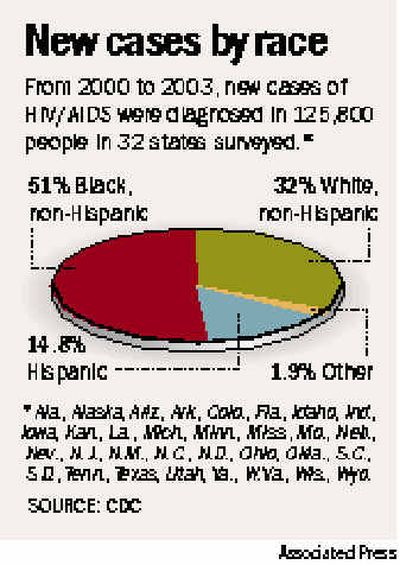Despite efforts, CDC failing to cut HIV rate

ATLANTA – Nearly a million Americans now have the AIDS virus, and the nation’s ability to keep others from becoming infected still lags despite a government pledge four years ago to “break the back” of the AIDS epidemic by 2005.
The campaign, launched by the Centers for Disease Control and Prevention in February 2001, intended to cut in half the estimated 40,000 new HIV infections that have occurred every year since the 1990s.
However, the rate of new cases remains about the same, according to CDC data released Wednesday as part of the federal health agency’s commemoration of World AIDS Day.
“We have a ways to go before we reach the mark of reducing new infections by half in the United States,” said Dr. Ronald Valdiserri, director of the CDC’s HIV and AIDS prevention program. He called the country’s HIV infection rate “relatively stable.”
“Clearly we want to continue, and are continuing, to fund programs to reach out to people who are high-risk and are not infected,” he added.
In 2001, the CDC’s campaign focused on outwardly healthy people who did not realize they had HIV – about one-fourth of those infected. Officials then said targeting them was key because if they knew they were infected, they would be more likely to take steps not to spread the virus. Such an effort “could possibly break the back of the epidemic in the United States,” the CDC’s Dr. Robert Janssen said then.
But the agency found that just targeting people who didn’t know they had the AIDS virus was not enough.
So last year, the CDC shifted gears, focusing on counseling those who knew they had HIV in an attempt to get them not to spread the virus. Yet some advocacy groups say that effort fails to focus on drug users or very sexually active young men, which advocacy groups say is key in preventing new infections.
“It just doesn’t seem like much is really happening,” said Terje Anderson, executive director of the Washington-based National Association of People Living With AIDS. “There just is a lack of imagination or spark in terms of the kinds of programs they support. I think they are politically afraid.”
However, one AIDS expert said that it is difficult for health officials to measure exactly how many new HIV infections there are each year.
“Forty-thousand is an estimate that is averaged over time. The changes can’t be tracked easily from year to year,” said Dr. James Curran, dean of Emory University’s Rollins School of Public Health and the CDC’s AIDS chief during the 1980s.
Valdiserri said the CDC is working on a way to accurately determine how many people are infected with HIV each year but the system is still under development.
Still, Curran said more attention needs to be paid to AIDS.
“What has concerned many of us in the United States is the lack of attention to the domestic AIDS problem and complacency on behalf of high-risk groups,” he said, adding that more counseling, testing and education are needed.
The CDC believes as many as 950,000 people in the United States are infected with HIV and as many as 280,000 of them don’t know it, Valdiserri said.
The rate of HIV diagnoses in the United States increased slightly – by 1 percent – between 2000 and 2003, from 19.5 people per 100,000 population to 19.7 per 100,000 in 32 states surveyed by the CDC.
Advocacy groups blame a lack of federal money for part of the failure to make a dent in the HIV rate.
“The reality is, to cut the number of infections, we need to do more – you can’t always do more with less. We desperately need more resources,” Anderson said.
When the AIDS epidemic began to unfold in the 1980s, U.S. HIV infections grew quickly.
Although infections peaked in that decade, they have remained level since the early 1990s. Drug therapies have enabled many infected with HIV to live relatively normal lives, but more than 18,000 Americans died of AIDS in 2003, according to the latest data available.